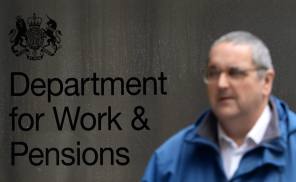

The Department for Work & Pensions (DWP) has outlined its objectives for the coming legislative period and how it intends to achieve them.
In a corporate report updated on 18 January the DWP stated it planned to run an "affordable and sustainable" welfare system that "provides financial security and supports economic growth and improved productivity".
The department has been allocated an expenditure limit of £6.8bn from the government and manages payments, such as welfare payments, of £176.9bn annually.
The DWP, which was taken over by secretary of state Esther McVey, MP for Tatton in Cheshire, in the latest government reshuffle in early January, has set itself five objectives for the coming four years.
Alongside a focus on closing the retirement savings gap, the department also wants to work on helping more people into work; combating disadvantages for disabled people; making childcare more accessible; and transforming the way its services are delivered to improve quality and reduce costs.
Guy Opperman, who kept his position as minister for pensions and financial inclusion during the reshuffle, is in charge of incentivising people to save more for later life.
He plans to achieve this by promoting the new, simpler state pension and encouraging more people to check their pension savings on a regular basis.
The government currently offers a Check your State Pension digital service, which allows people to view a forecast of their state pension and options they may have to improve it.
But in 2019 it plans to launch a pensions dashboard, which will allow people to see all their pension pots, including state and private pensions, in one digital interface.
The DWP also pledged to keep the pensions triple lock, for the duration of the Parliament and to continue to deliver means tested pension credit payments providing additional financial support for people aged 75 and over.
The state pension triple lock guarantees that the basic state pension will increase by a minimum of either 2.5 per cent, the rate of inflation or average earnings growth, whichever is greatest.
At the June snap election the Conservative Party’s manifesto had said it would get rid of both the triple lock and winter fuel payments.
But the guarantees were saved by the deal struck between the Tories and the Democratic Unionist Party following the election.
The government is also keen to get more people into workplace pension schemes but is banking mainly on the future performance of auto-enrolment for this.
However, continuing to simply rely on auto-enrolment's power of inertia has been branded a "high-risk strategy" by the man heading up the Department for Work & Pensions' advisory board.
Jamie Jenkins, head of pension strategy at Standard Life, and chairman of the DWP's external advisory group, which supported the government's auto-enrolment review, told FTAdviser that low opt-out rates should not be taken for granted, especially with this year's increase in contributions.
Introduced in 2012, auto-enrolment has now reached nine million people, and contributions are currently set at 2 per cent, split evenly between employer and employee.
From April 2018, the minimum total contribution will increase to 5 per cent and one year later it will increase again to 8 per cent, with the worker paying 5 per cent.
Mr Jenkins said: "This is a hugely important step. So far, opt-out rates have been little more than 10 per cent.
"In the absence of meaningful pay increases, this is a significant additional expense for many people and may represent a more important sacrifice each month to maintain its affordability."
The government intends to expand the auto-enrolment scheme and extend it to small employers and self-employed people, as announced in the latest auto-enrolment review.
It will also publish a pensions white paper that will set out plans to strengthen the powers of The Pension Regulator to protect private pension schemes.
Closer to home, the department stated it intends to design more user-friendly digital services and introduce more flexible working hours among its staff "to match customer demand".
It is currently working towards a target of 1.6 per cent for the net loss from fraud and error overpayments on DWP benefits and will continue to explore "how we can share information across government and with third parties to further reduce error and detect fraud", it pledged.
Net losses had increased from 1.3 per cent in the year 2015 to 2016 to 1.4 per cent in 2016 to 2017.
carmen.reichman@ft.com



